Spark your artistic imagination with these ten fresh drawing ideas: transform everyday objects through surrealism, design human-animal hybrid characters, sketch emotional vistas, capture urban scenes in motion, place mythological creatures in modern settings, visualize music on paper, imagine microscopic worlds, experiment with shadow and light, create fantasy maps, and turn food into characters. These creative prompts push boundaries while developing technical skills. Each concept opens doors to unexplored artistic territories waiting to be discovered.
Key Takeaways
- Transform everyday objects into surreal art by adding unexpected elements like wings to teacups or changing scale proportions.
- Create emotional landscapes that visualize feelings through color, texture, and scenery, like depicting anxiety as jagged mountains.
- Practice urban sketching with quick 2-minute drawings to capture the movement and energy of city life.
- Visualize music through abstract forms, using colors to represent instruments and shapes to follow song structure.
- Design fantasy maps incorporating real-world inspirations like mountain ranges, rivers, and forests with magical elements.
Everyday Objects Through a Surrealist Lens
When ordinary objects break free from reality’s rules, they open doors to fascinating new worlds of creativity. By viewing everyday objects through surrealism, artists discover that a simple teacup might sprout wings or a lightbulb could grow roots into the earth. This approach invites artistic exploration that transforms the mundane into the magical.
The power of unexpected juxtapositions—like placing a giant apple in a tiny room or floating umbrellas in a desert—challenges viewers to question what they know. Artists can manipulate scale, turning miniature items enormous or shrinking mountains to fit in a pocket.
Through symbolism, common items take on deeper meanings: a melting clock might represent how time feels different when we’re bored versus excited. These surrealist techniques turn simple drawing practice into mind-bending adventures!
Character Design: Merging Human and Animal Features
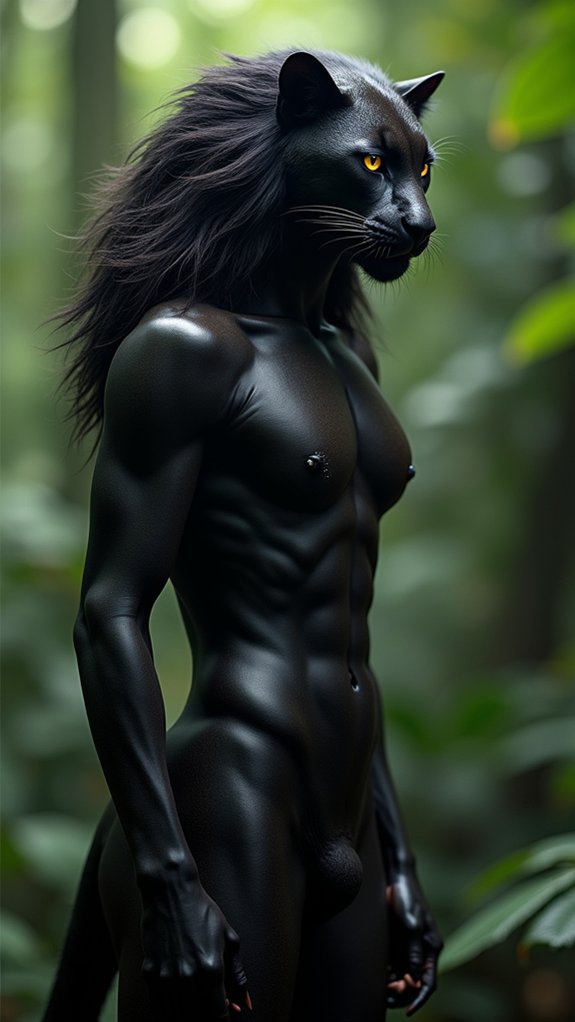
Why do characters with both human and animal features captivate our imagination so powerfully? Anthropomorphic designs create an instant connection with viewers, blending the familiar with the fantastic.
The fusion of humanity and animalism in design speaks to our primal connection with nature while elevating it to something extraordinary.
This unique opportunity allows artists to experiment with different styles while crafting characters that feel both relatable and magical!
When designing these hybrid creatures, consider:
- Balancing human posture with animal expressive facial features
- Using vibrant colors to emphasize distinctive animal traits
- Incorporating clothing that complements rather than hides natural features
- Ensuring anatomy choices reflect the character’s personality and backstory
The magic happens in finding that sweet spot between species!
Whether you’re creating a fierce wolf-human warrior or a gentle deer-person healer, character design thrives when animal traits enhance rather than overshadow human elements—or vice versa!
Emotional Landscapes: Drawing Feelings as Places
Imagination opens endless doorways to worlds where feelings take physical form. Emotional environments allow artists to capture the essence of their inner worlds by transforming emotions into visual scenery.
When feeling overwhelmed, try drawing stormy mountains, or create sunny meadows for moments of pure joy! This creative process invites artists to explore various techniques, combining different textures and colors that match their emotional state.
Blues and grays might form a valley of sadness, while vibrant oranges could become happiness hills. Drawing these environments isn’t just about building artistic skills—it’s also therapeutic!
Personal experiences provide the best inspiration. That argument you had? Maybe it’s jagged rocks beside turbulent waters. That perfect summer day? Perhaps it’s a golden forest with dappled light streaming through.
Urban Sketching: Capturing City Life in Motion
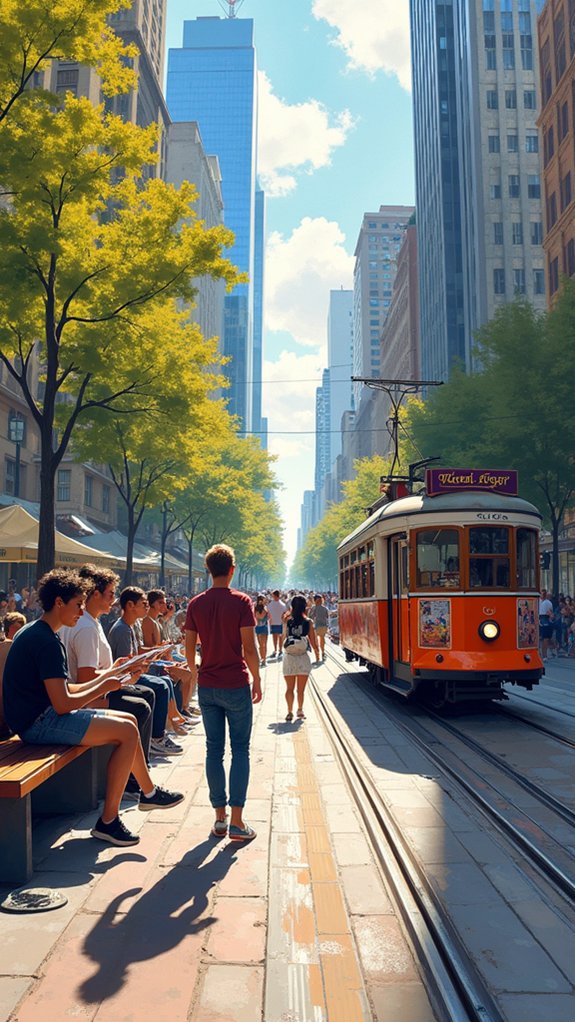
Cities buzz with endless movement and life, creating perfect scenes for artists to capture with quick strokes of their pens. Urban sketching transforms ordinary city moments into vibrant visual journaling, where artists document everything from busy cafés to construction sites.
Using spontaneous strokes, sketchers build observation skills while telling stories of urban environments.
- Grab a portable sketchbook and park yourself at a bustling intersection – you’ll be amazed at how many interesting characters walk by in just 15 minutes!
- Try quick 2-minute sketches to catch people in motion without getting bogged down in details.
- Add splashes of watercolor to bring energy to black-and-white sketches.
- Join the growing community of artists who meet up for “sketch crawls” through interesting neighborhoods.
Mythological Creatures in Modern Settings
While urban environments provide endless inspiration for artists, another fascinating realm awaits exploration—mythological creatures wandering through our modern world. Imagine dragons lounging on skyscrapers or unicorns trotting through busy intersections!
Artists can develop unique character designs by blending ancient mythical creatures with contemporary fashion and technology. The contrast between these fantastical beings and modern settings creates compelling visual narratives.
Picture a griffin checking its smartphone or a phoenix riding the subway! Using vibrant colors and dynamic compositions, artists can showcase these whimsical interactions in everyday scenarios.
This theme challenges artists to explore new perspectives, enhancing their artistic abilities while commenting on how ancient wisdom might view our fast-paced society. The possibilities are endless—a mermaid in a coffee shop, anyone?
Food Art: Beyond the Still Life
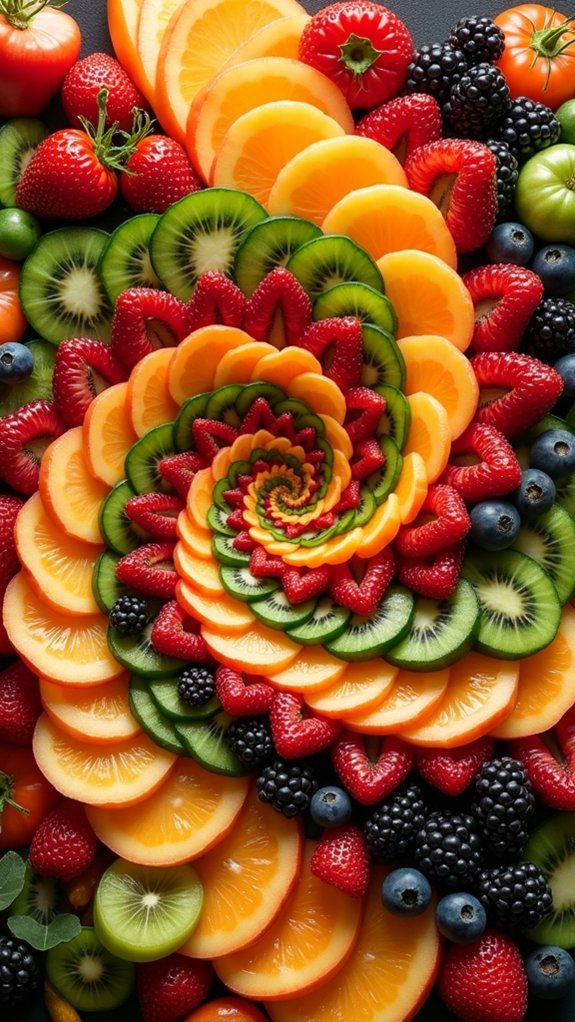
Food art challenges artists to think beyond traditional still life arrangements and create dynamic stories with their culinary subjects.
Artists can bring personality to food through personification, turning a simple apple into a character with feelings or transforming a plate of spaghetti into a whimsical ocean scene.
Experimenting with textures—capturing the glistening juice of a sliced orange or the fluffy layers of a croissant—pushes creative boundaries and transforms ordinary meals into extraordinary artistic expressions.
Dynamic Food Stories
Transforming ordinary meals into extraordinary visual narratives, dynamic food stories take art beyond traditional still life paintings. Artists experiment with drawing techniques to capture not just the appearance of food, but the entire experience surrounding it.
These artistic creations invite viewers to connect with the emotions and memories that meals often trigger, making food art a creative gateway to deeper storytelling.
- Use vibrant colors and dynamic compositions to make viewers almost taste the spaghetti twirling on a fork
- Incorporate personal details like grandma’s worn recipe card beside a steaming pie
- Draw people’s expressions as they share a spicy dish for the first time
- Sketch cultural food rituals that showcase family traditions and heritage
These skills turn simple food drawings into windows to our shared human experience.
Culinary Texture Challenges
Beyond mere appearance, the textural dimension of food presents artists with fascinating creative hurdles. Capturing the fluffiness of whipped cream or the crispness of fresh vegetables pushes drawing skills to new levels, transforming ordinary meals into extraordinary culinary art.
Artists can explore different techniques—colored pencils create smooth yogurt surfaces, while watercolors perfectly render juicy fruit textures!
When tackling food textures, experimenting with vibrant hues becomes essential. The bright oranges of mangoes or deep purples of eggplants make compositions pop off the page.
Don’t just draw static food items; include slicing actions or arrangement processes to show movement and life. These challenges aren’t just about making pretty pictures—they sharpen observation skills and help artists appreciate the beauty in everyday eating experiences.
Who knew breakfast could be so inspiring?
Drawing From Music: Visualizing Sound and Rhythm
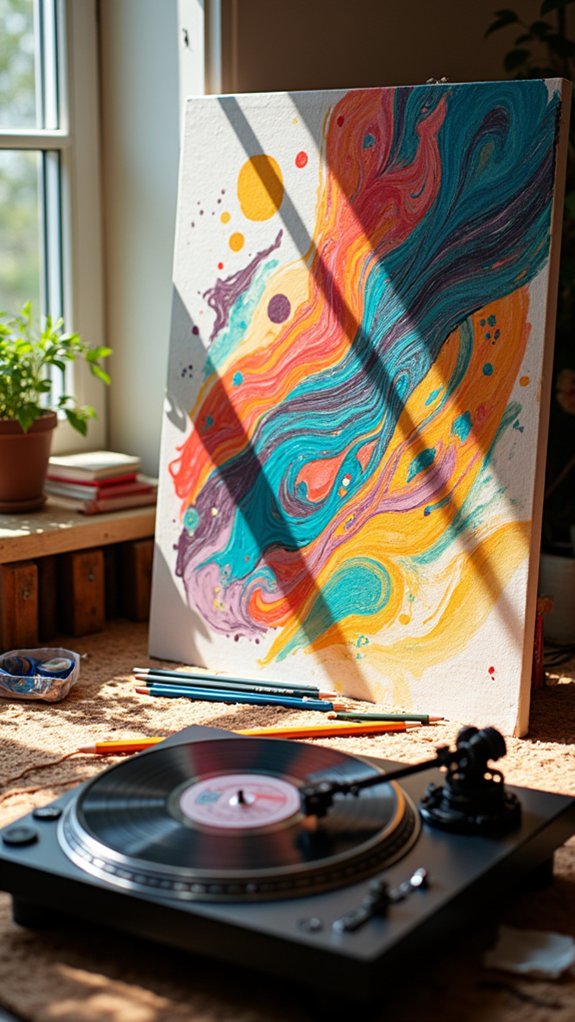
Have you ever closed your eyes while listening to your favorite song and seen colors or shapes dancing in your mind? This natural response can spark creativity and launch an artistic journey through drawing from music.
Artists explore different ways to visualize sound, translating beats and melodies into tangible artwork that captures the essence of what they hear.
- Try matching fast tempos with jagged lines and slower ballads with flowing curves
- Experiment with techniques like closing your eyes and drawing what you “see” while listening
- Use different colors to represent various instruments or vocal ranges
- Create abstract forms that follow the structure of the song from beginning to end
Drawing from music opens up endless possibilities, turning invisible sound waves into visible expressions that dance across your paper.
Microscopic Worlds: Imagining the Unseen
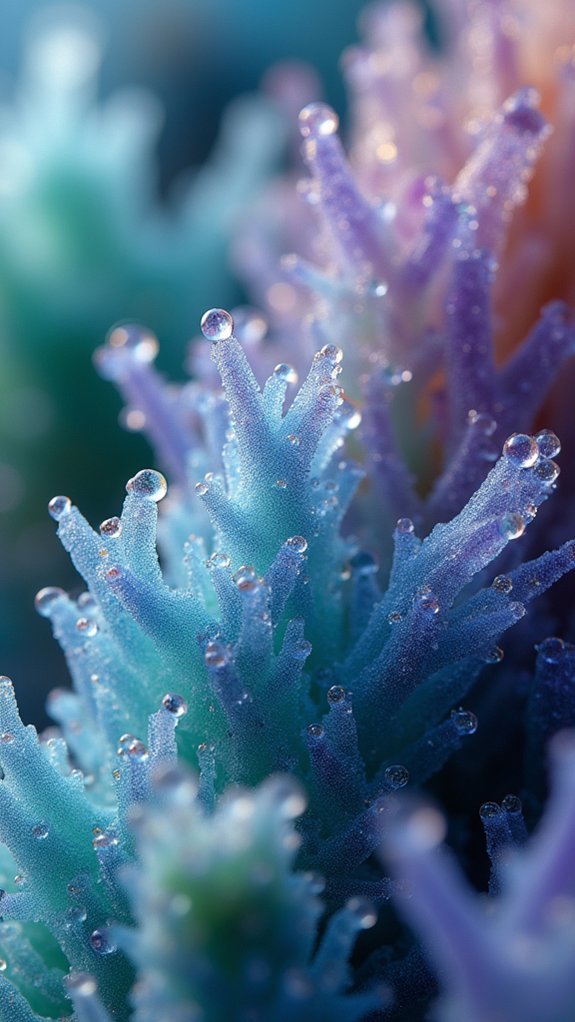
What invisible marvels exist in the drops of water, specks of dust, and cells of our own bodies? The microscopic worlds around us offer artists an incredible playground for creative journey! When artists zoom in on these tiny domains, they discover intricate details that spark imagination.
Exploring these unseen dimensions can push your art to amazing new places. Experiment with different techniques to capture the swirling patterns of bacteria or the spiky surface of pollen!
| Drawing Prompt | Artistic Approach |
|---|---|
| Cell Membrane | Explore textures with watercolors |
| Bacteria Colony | Create imaginary sceneries |
| Virus Structure | Use geometric patterns |
| Crystal Formation | Apply layered translucent colors |
| Pollen Grain | Incorporate spiky textures |
These art prompts invite you to discover beauty in the tiniest corners of existence, transforming scientific wonders into enthralling visual stories!
Shadow Play: Creating Art With Light and Dark
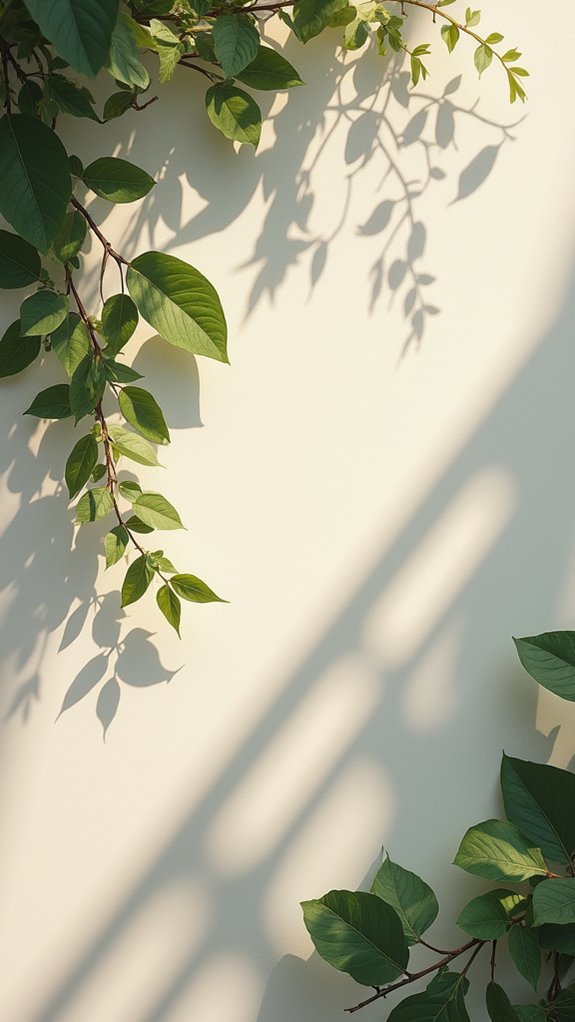
Light and shadow dance together in every masterpiece, creating a magical interplay that brings drawings to life!
Shadow play transforms flat sketches into dynamic artwork, adding depth and visual interest that captivates viewers. Artists who experiment with shading can achieve stunning tonal values by using different pencil grades—softer B pencils create darker shadows while harder H pencils offer lighter tones.
The humble shadow breathes life into art, turning two-dimensional lines into worlds with depth that pull us into their reality.
- Try chiaroscuro techniques to add drama and three-dimensional quality to your drawings
- Position your subject near a window to observe how natural light creates unique shadow patterns
- Practice drawing the same object under different light sources to improve your art skills
- Use shadows in portraits to highlight facial features and add emotional depth
The beauty of light and shadow lies in their relationship—neither exists without the other!
Fantasy Maps: Charting Imaginary Territories
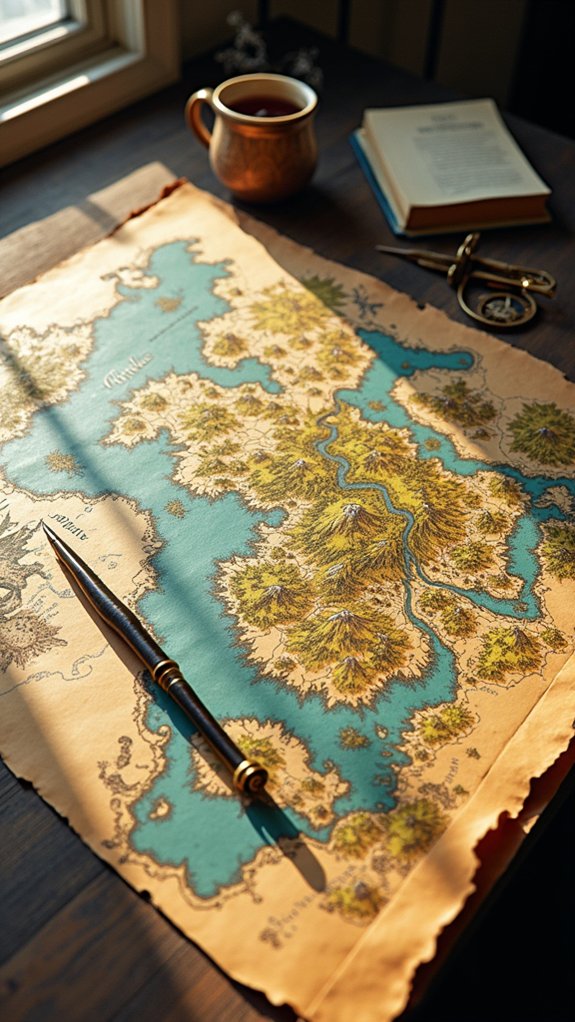
While shadows bring dimension to artwork on paper, fantasy maps transport us to entirely new territories altogether! Creating fantasy maps allows artists to improve your drawing skills while building incredible worlds filled with mountains, rivers, and magical forests. These art pieces showcase your creative expression through invented places and exciting journeys.
| Map Element | Real World Inspiration | Fantasy Twist |
|---|---|---|
| Mountains | Himalayan peaks | Dragon lairs |
| Rivers | Winding Mississippi | Glowing water |
| Forests | Amazon rainforest | Talking trees |
| Ruins | Ancient temples | Magic portals |
| Borders | Country boundaries | Fairy territories |
Don’t forget to add mythical creatures lurking in corners or hiding in oceans! As viewers explore your map, they’ll discover stories waiting to unfold in every carefully drawn geographical feature. Grab your pencils—adventure awaits!
Frequently Asked Questions
How Do You Spark Creativity When Drawing?
Artists spark creativity through style experimentation, character design, and emotional expression. Sketch prompts, color exploration, nature inspiration, and art challenges help overcome blocks while developing artistic voice and technique.
How Do You Come up With Creative Drawing Ideas?
Artists generate creative drawing ideas through inspiration sources like nature sketches, daily prompts, and collaborative projects. Character design, color exploration, and art challenges further diversify their visual vocabulary and conceptual approach.
Is Drawing a Talent or Skill?
Drawing embraces both natural ability and learned skill. While some possess innate tendencies, technique development and artistic growth flourish through consistent practice. Personal expression and innovative thinking emerge as one’s fundamental capabilities evolve.
What Is Creativity in Drawing?
Creativity in drawing embodies imagination expansion and artistic expression through visual storytelling. It establishes emotional connection by offering unique perspective, drawing from diverse inspiration sources while developing personal style.
Conclusion
Drawing isn’t just about pencils and paper, it’s about releasing your imagination. These ten ideas can transform a blank page into a world of possibilities, whether you’re designing mythical creatures or sketching city streets. Remember, creativity grows with practice and exploration. So grab your supplies, try something new, and watch your artistic skills soar. The most amazing drawings often start with the simplest idea – yours could be next!

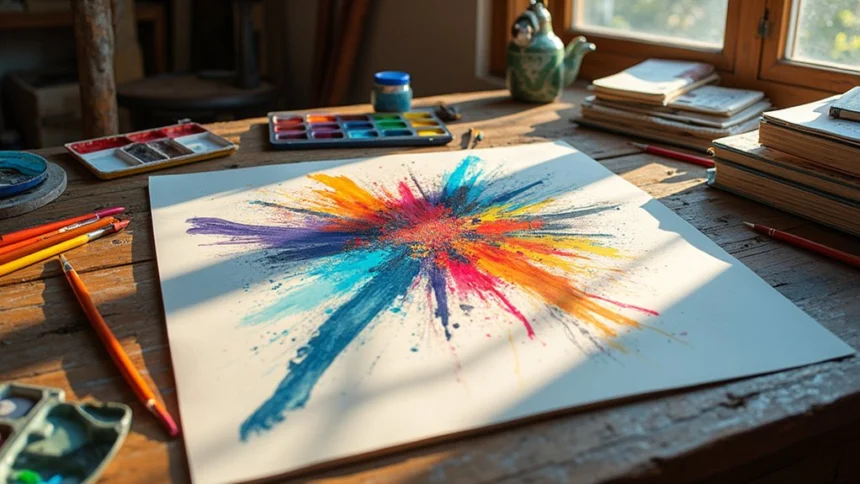
Leave a Reply